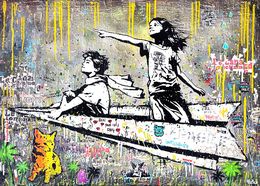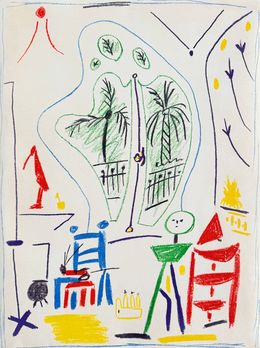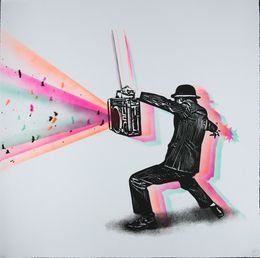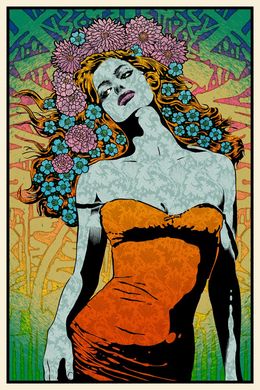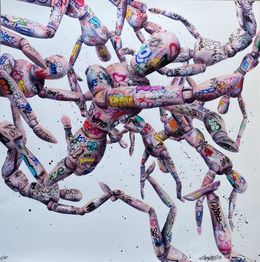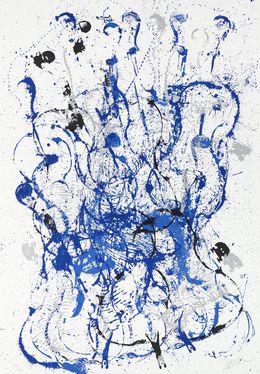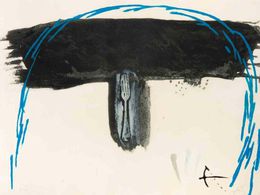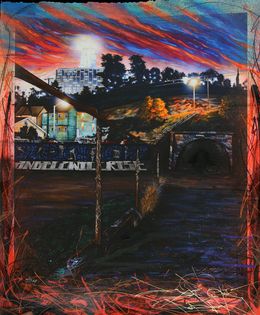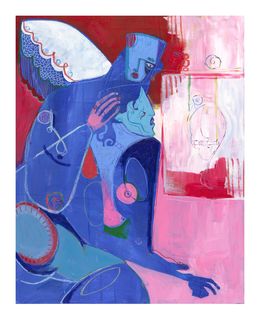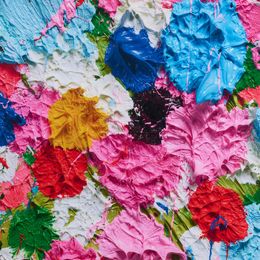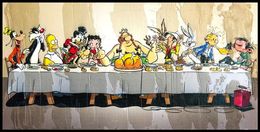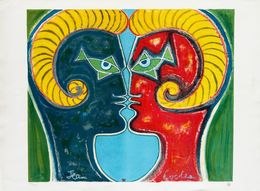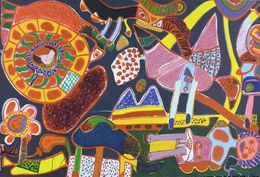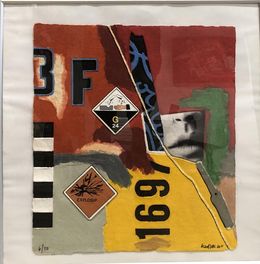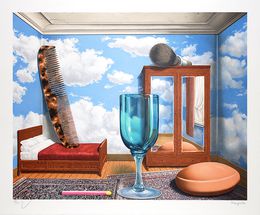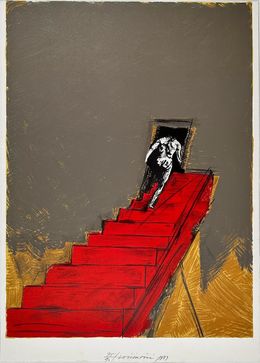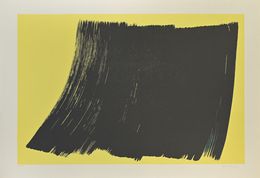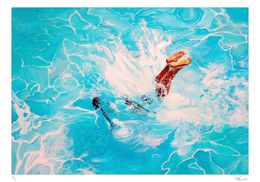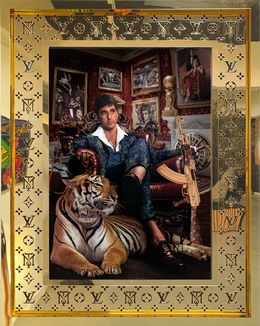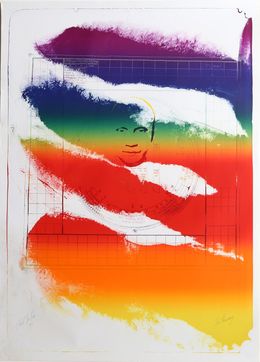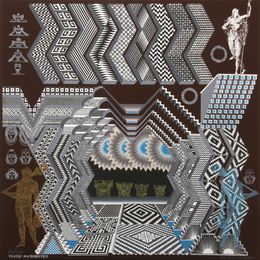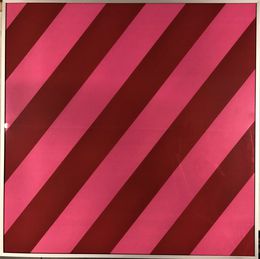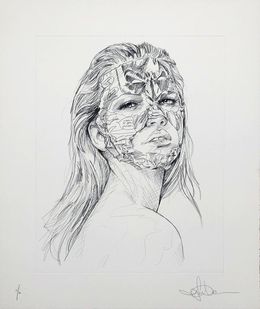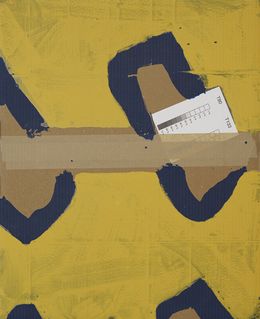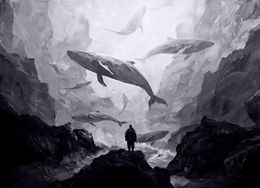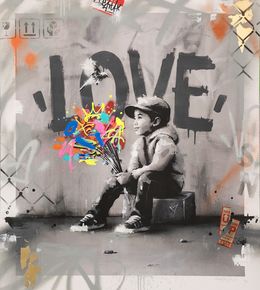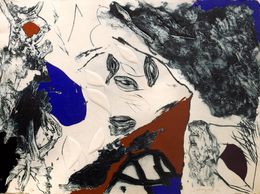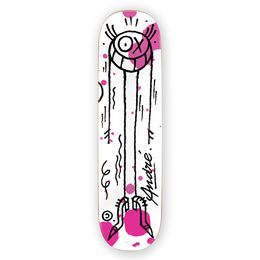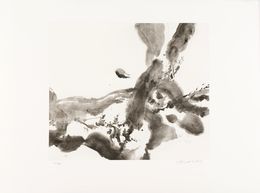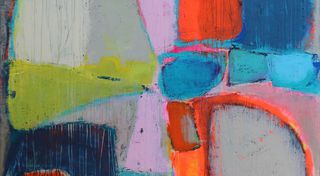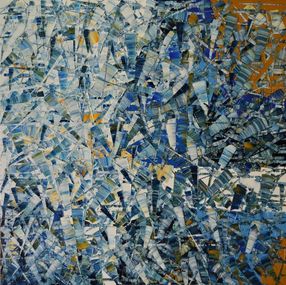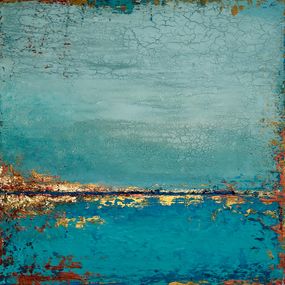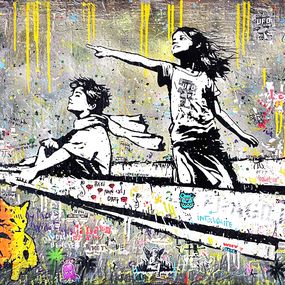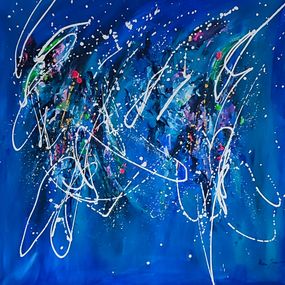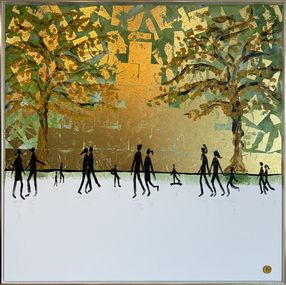Query
Category Print
Artist Shepard Fairey (Obey) Petr Strnad Death NYC Sephora Venites Salvador Dali Takashi Murakami Pierre Alechinsky Alberto Ricardo IPR Graph Vincent Sabatier Angela Cameron Philippe Matine Yamila Velázquez Arman Sumit Mehndiratta Erró Jean-Philippe Henric Hervé Di Rosa Sophie Griotto Pablo Picasso Jean-Marie Gitard (Mr Strange) René Magritte Leonor Fini Robert Combas Corneille James Chiew Antoni Tapies Roberto Matta Joan Hernández Pijuan Ske Marc Chagall Bernard Buffet André Masson Bram van Velde Albert Ràfols-Casamada Kobalt Claude Weisbuch Victor Vasarely JR Diederik Van Apple Josep Guinovart Max Ernst Christophe Malsert Mr Brainwash Alex Katz Nina Tsorieva Joan Miró Valerio Adami Maude Ovize Sophie Petetin Jim Bird Yohan Storti Théo Tobiasse Batik David Shrigley Carrie Graber Kristina Mallen JonOne Philippe Geluck Patrick Marie Alexei Lantsev Ernest Pignon-Ernest Angu Walters Peter Klasen Lionel Morateur Zao Wou-Ki Didier Hamey Cleon Peterson Speedy Graphito Catherine Clare Marino Marini Alekos Fassianos Tino Stefanoni Matthieu Forichon Roland Topor Antonio Segui Joan Ponç Alex Manchev Yaacov Agam Jorge Castillo Rafael Alberti Hans Bellmer Pierre Muckensturm Charles Lapicque Enki Bilal C215 Julio Le Parc Camille Hilaire Roy Ahlgren Antonio Saura Antoni Clavé Alain Clément Invader Louis Toffoli Karel Appel Keith Haring Philippe Achermann Raoul Ubac Eduardo Arroyo Mimmo Rotella
Color Black Red Sky blue Yellow Dark blue Green Grey Beige Pink White orange brown Purple Navy blue golden Silver Blue transparent
Orientation Portrait Landscape Square
Medium lithography Screen Print etching giclée digital art fine art print digital print tirage fine art paper digigraphy aquatint engraving eau-forte inkjet pigment ink Digital color print AI image HD print collage dry point ink acrylic resin Textiles aerosol paint aquagravure C-print assemblage 3D print Watercolour digital embroidery gold leaf Stencil metal canvas pencil plexiglass oil epoxy paint ceramic mixed media marker glass wood charcoal book steel sequins Lego pastel Plate skateboard Tables cotton silver print Organic materials plastic copper mosaic Butterfly tinted varnish archival pigment print tapestry Seating neon marble concrete Crystal Wire object sand cardboard ballpoint pen plaster brick mirror vegetal fiber bronze stone vinyl iron chalk LED numeric print Silicone leather latex cement glue clay Furniture color edition gouache terracotta lead mine aluminium Posca jewelry Lighting
Theme Abstract artworks Portrait Pop Art Artworks Street art Nude Animal Geometric Fantastic Graphic figurative Everyday life Landscape Floral Architecture Icons Urban Landscape Artworks Still Life Black and white Comics Art brut Artworks Conceptual Music Vehicles Sport Cinema Political and historical Seascape Fashion Minimalism Eastern Art Vanity Mountain landscapes Religious Garden African artworks Under Water Food Aboriginal art From the sky Tribal art Wall sculpture Monumental Decorative objects Fantastic
Support paper Fine art paper Arches paper canvas Hahnemuehle fine art paper aluminium Diasec and Dibond cotton paper cardboard wood plastic textile plexiglass bank note argentic paper board ceramic metal glass found Object steel plaster vinyl stone
Thematic Artworks Shipped From the United States Prints for Gifting Frieze New York Art Paris Moderne Art Fair 2025 Art Basel Gift Guide: Must-Have Masterpieces Art Picks for Less Than $500 Art Basel Paris Graphic Arts Prints of the Season A Pop Art Interior Masters of Modern Art Women by Women Bright and Vivid Colors Art Basel Hong Kong Intaglio The Art Favorites by the Team of viennacontemporary Gift Guide: Trending Artists 26 Artists to Watch in 2026 Bauhaus Inspired by Banksy The Artists of the Pompidou Centre Contour Line A Parisian Apartment with PAMONO Inspired by Pop Art Women Artists Our Staples of FIAC Abstract Op Art After Dark Mood: Calm A Natural Interior The Spirit of the Seventies Inspired by Graphic Design At home with Chairish Unique Art Gifts for Valentine’s Day Gift Guide: Affordable Treasures Pattern Play Mother's Day Inspired by Art History French Street Artists Gift Guide for the Friend Who Has Everything Artlympics: Olympic Games Paris 2024 Gift Guide for the Classic Connoisseur Summer Holidays Environmental Art Mid-Century Modern Interior Frieze Los Angeles The Venice Biennale Art Picks for Less Than $100 The Best of our British Galleries Art Basel Paris 2024 American Dream Inspired by Warhol Artists to Watch in 2019 Inspired by David Hockney Pride Art Inspired by Manga Typography in Art Inspired by Cubism Zao Wou-Ki: Lithographs Inspired by the Renaissance Inspired by Mythology Art Picks by Interior Designers Art Basel Miami Beach 2023 Winter Selection Diversity Art and Tolerance Art Tropical Touch Asian-Inspired Interior Inspired by Miró Armory Show Lille Art Up 2025 Springtime Inspired by Frida Kahlo Frieze Art Fair Back to Nature Works Inspired by the Four Elements Mood: Mysterious Après-Ski Affordable Art Fair Hong Kong Inspired by Magritte Vamos a la Playa Perfect Symmetry Optical Illusions Fantastical Beasts Minimalist Interior ARCO Madrid Cats and Dogs Fashion-Inspired Works Crush of the Month: November Gallerist Gift Guide Gift Guide for the Bold Collector Poinçon 22 Back to the Future African Art Vintage Interior Artworks by the World's Most Famous Artists Inspired by Damien Hirst Inspired by Niki de Saint Phalle Mediterranean Interior
Tag Colors Abstract art Women colorful Pop Culture Faces Graffiti Fictional Character Geometric abstraction Pattern Human body Trees Composition Surrealism Cartoons Text Look Figuration Men Circle Eyes City Urban art Landscape Birds Characters Buildings Sky People Sea Plants Symbols Girl Abstract Minimalism Children Lines CoBrA Triangle Paris Illustration Cats Love Abstract expressionism 1970s Couple Marilyn Monroe Horses Urban Semi-abstract Calligraphy Salvador Dali Mangas House Head Beach Dollars Luxury Botany Boat Night Silhouette Picasso France Skull Imaginary landscape Leaf Interior Banksy Summer Clouds Africa Japan Cars Wall Heart Dogs Movement Wild animals Lego Artworks Smile 80s Italy Money Star Wars artworks Mickey Mouse Bouquet Letters Expressionism Mythology New York Psychedelic Young girl Hands Art History Butterflies Rural landscape Op Art Swimming pools artworks History Fish
Price
Size Medium (< 115 x 115 cm) Small (< 50 x 50 cm) Large format Very small (< 25 x 25 cm) Very large (> 200 x 200 cm)
Selection Artworks by best-selling artists Artworks by famous artists Master Artists Young Talents Our recommendations New & remarkable Artists Special offers
Movement Pop Culture Street Artists Classically-Inspired Illustrative Artists Surrealist Artists Colorful Geometric Painters Famous Illustrators Magic Realism Provocative Artists Avant-garde artists Figurative Collage Comic Artists Experimental Painters Famous Street Artists Detailed Somber Illustrations Playful Street Art Appropriation South American Art Figurative Pop Artists Satirical street artists Abstract Expressionnism Contemporary Illustration Logo-Inspired Artists Cubism Movement Expressionism Figurative Street Artists Digital Artists Movement Op' Art Naïve Artists Stunning Sculptures Deconstructivism Movement Outsider Art Life Portrait Artists Inspired by Astrology Movement Narrative Figuration Neo-Dada Movement Free Figuration Meaningful Typographies Geometric Sculptors Ghostly Calligraphies Abstract Graphics Orphism Rich and colorful figurations Spontaneous Lines Young British Artists (YBAs) Colorful Pop Sculptors Art Informel Somber Portrait Painters Famous Collage Artists Naïve-Style Illustrations American Icons Die Brücke Stamp-Style Illustrations Contemporary Women Surrealists Fluxus Neo-expressionism Poetic Landscapes Movement Pop Art Abstract Closeups On film Activist Artists Abstract Landscape Artists Graffiti Artists Hyperrealism Colorful Flat Illustrations Ancient Inspiration Pop Culture Objects Lyrical Abstraction Fauvism Precisionism The Arts and Crafts Movement Somber Abstract Painters Black and White Portraits Abstract Japanese Art Contemporary Still Life Swathes of Color Industrial-Style Assembly Art deco-style artists Abstract Street Art Der Blaue Reiter Extracts from the Present Post-Impressionism Post-War Art Criticizing Photographs Impressionism Gestural abstraction Street Culture Animals Arabic Calligraphy Basquiat-style Artists Neo-Conceptualism Inspired by Cave Painting Contemporary Feminist Artists Lively Life Scenes Dada De Stijl Where Art Meets Design Abstract Explorations Rothko-style Artists Optical Illusions Photographers Pointillism Movement Harlem Renaissance Social Realism
Art fair
Height
Width
Page
Nationality French artists American artists Spanish artists Italian artists British artists Belgian artists Dutch artists German artists Japanese artists Brazilian artists Canadian artists Polish artists Argentinean artists Israeli artists Dane artists Russian artists Swiss artists Chinese artists Indian artists Bulgarian artists Icelander artists Chilean artists Australian artists Greek artists Mexican artists Hungarian artists Portuguese artists Armenian artists Serbian artists Swedish artists Cuban artists Cameroonian artists Austrian artists Norwegian artists Monacan artists Czech artists Irish artists South Korean artists Venezuelan artists Lebanese artists Nigerien artists Romanian artists Moroccan artists Colombian artists Slovenian artists Ukrainian artists Albanian artists Belarusian artists Iranian artists Ecuadorean artists Croatian artists Thai artists Kenyan artists Indonesian artists Lithuanian artists Georgian artists Finnish artists Ivorian artists SouthAfrican artists Turkish artists Algerian artists Puertorican artists Uruguayan artists Luxembourger artists Syrian artists CentralAfrican artists Filipino artists Slovakian artists Emirian artists Latvian artists Peruvian artists Guinean artists Panamanian artists Djibouti artists Egyptian artists Bangladeshi artists Ghanaian artists Azerbaijani artists Dominican artists Hong Kongese artists SanMarinese artists Taiwanese artists Uzbekistani artists Angolan artists Bolivian artists Bosnian artists Iraqi artists Macedonian artists Maltese artists Senegalese artists Vietnamese artists Yemenite artists Saudi artists
Sort
Universe


